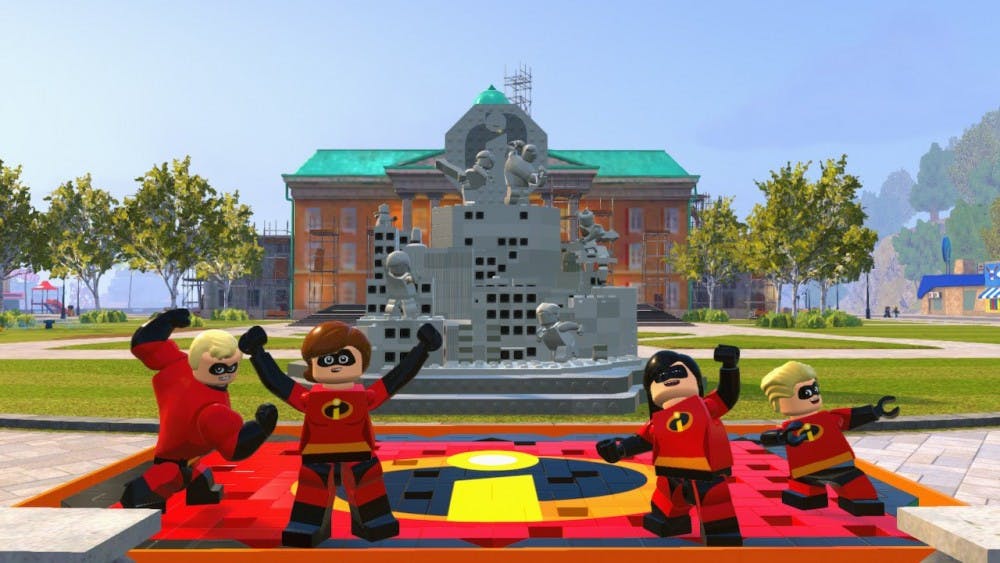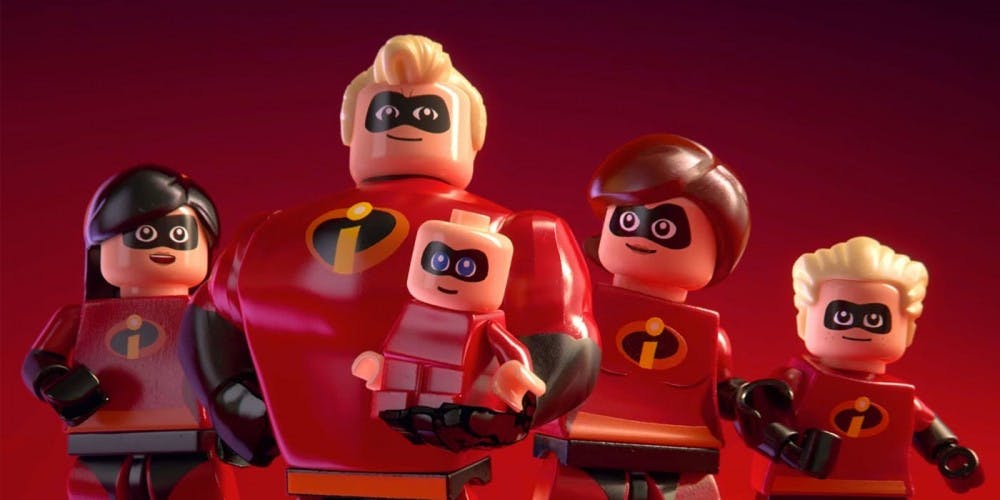The art of the video game/movie tie-in is a long lost one in this day and age. Up until a certain point, if a blockbuster was in cinemas (especially if it was animated), you knew that there would be a video game adaptation rip roaring and ready to go on store shelves.
Most of them, however, were garbage made for a quick buck.
Case in point, The Incredibles. Released in 2004, the film was among the many animated films of the era that received a home console adaptation to capitalize on its release. Heck, it was one of the few tie-in games that actually got a semi-canonical sequel (The Incredibles: Rise of the Underminer), a rarity in of itself. Cut to FOURTEEN years later, and with Incredibles 2 in theaters, a new game featuring Pixar’s first family of superheroes has hit the scene, backed up by a brand new game. However, the blockier format isn’t just a graphical limitation.
I wanted to go bowling

Image from WarnerBros.
If it wasn’t obvious from the get-go, Lego The Incredibles is a Lego game. Much like the subject matter of this game, if you aren’t familiar in any form to this series of games, it would almost be harder to describe how these games play than just giving a person one of them. In essence, you build things out of the titular bricks, you smash things out of the titular bricks, and you build new things out of the stuff you smashed. You beat up bad guys using an extremely simple combat system (Pro tip: JUST SMASH SQUARE/X/PUNCH BUTTON) that only in recent games has been receiving an overhaul. In addition, you solve simple puzzles, and use character’s abilities to progress through the level, and collect a variety of things while performing simple platforming sections.
The controls themselves are tight (save for flight controls), and very responsive. In all honesty, there is no point in critiquing the standard gameplay because the only real critiques would be ones repeated by others long ago. Aside from complaints of staleness and fatigue, it is effectively critic-proof. So, what does Lego The Incredibles actually bring to the table?
…Button-mashing. A whole lot of button-mashing. More than I’ve seen in the series to date.

Image from Destructoid
This comes in the form of the new Family Build mechanic. It occurs when the player comes across a large pad emblazoned with the Parr family crest, leading to a sequence where they help the Incredibles “build” something massive in order to progress. This means utterly annihilating the circle button for one family member, switching to another and doing the same (while keeping an eye on the member whose bar you just filled, switching to them immediately after you fill up the one you just finished before they start to drain, and repeating this two or three more times depending on how many family members are at play). This mechanic is used multiple times throughout the game, and quickly loses its’ spark. The only times a spin is thrown on this gimmick is in the form of Pixar Family Builds, wherein completion awards you a playable character from the greater Pixar multiverse…or universe, depending on what online nonsense you follow, in addition to one of the game-changing Red Bricks.
However, Family Builds of the Pixar variety are only unlocked via the new Crime Wave system, wherein players free sections of the open world from supervillains…yet boils down to what is essentially three mission varieties repeated over and over again. It gets old.
You can grind through the Crime Waves and rack up red bricks freely without any story restraints…with the exception of two game-breaking ones, whose Pixar builds are only revealed by completing the main campaign. Still, the red bricks given make the campaign a breeze.
Saturday-Morning Incredibles
To discuss the plot of Lego The Incredibles would be to discuss the plots of both The Incredibles and Incredibles 2, both of which are films that are readily available (the former more than the latter) and are more than worth your time and money. The game faithfully adapts the plot of both films, with a lifespan of twelve levels that span the length of both movies (not including any content in the open world).

Image from We Got This Covered
Yet, the game makes a variety of concessions to the plots in order to both accommodate the long-standing couch co-op format that the Lego franchise has been a champion of since its’ inception, as well as “child-proof” any overly dark elements so as to appeal to younger children. In the case of Lego The Incredibles (and more specifically, the Incredibles 2 content of the game) this means partnering up characters that are otherwise on their own in the canonical story, putting less of an emphasis on bits that aren’t major action setpieces (meaning far less screentime for pivotal characters), and inserting wacky kid jokes into bits where they really aren’t necessary.
Of course, elements like this are a trademark of how the Lego series of games (and by proxy, developer Traveler’s Tales) work, and at times, this kind of content is fairly endearing. However, it doesn’t change the fact that it can feel intrusive in what is an otherwise fairly grounded storyline.
Still, there are things about the game that ring irksome from the perspective of someone with an affinity for these movies. For starters, it makes the boneheaded decision of making players play through Incredibles 2 first, potentially spoiling the long-awaited sequel for those who may not have been able to see it before playing. It is an understandable move, seeing as the game was released the same day as I2, but from a chronological standpoint, it feels jarring. Moreso jarring (and perhaps my biggest flaw with the game) is the translation of the Pixar-bred designs to simplified Lego minifigures. Some characters from both the Incredibles canon and the Pixar guest characters translate perfectly to the uniform format. However, aside from some unique designs (and some returning voice actors from all of the movies involved in the game), most of the characters feel completely downgraded and generic as a result of losing their unique physical appearances.

Image from IGN
That said, while it is appreciated that a most of the unlockable characters in this game are composed of Supers rooted in Incredibles lore established on a bonus feature on the original home release, I do feel that being able to play as the collective list of Supers that Syndrome murdered in his quest for glory won’t be that big of a selling point to most fans.
The greater good
Lego The Incredibles, outside of holding the title of being the first Lego game based on a Disney property (if you don’t count any of the numerous Marvel games produced after and technically before the corporation bought out the comic company), really has nothing going for it aside from the brand it is based off of. Of course, the game itself is well-produced and filled with obvious signs that the developers enjoyed filling as many nooks and crannies with references to Incredibles lore and shout-outs to the greater Pixar Parthenon of films. However, aside from a far larger emphasis on button-mashing and “combat,” the game is the same as nearly every other game released under the Lego label, give or take a chunk of content. I’m sure that won’t deter kids and families from picking up the title for a lark, of course, and I’m not opposed to that notion. However, I’m not sure if it will keep one’s attention longer than a five-night rental that came along with a medium pizza and a 16oz bottle of Dr. Pepper.
At the end of the day, Lego The Incredibles is good. It’s not particularly praise-worthy and it’s not even that particularly bad.
It’s just good, and that’s the greatest it’s ever going to get.

Featured image from Screenrant
For more entertainment related content, visit us at Bytebsu!




















